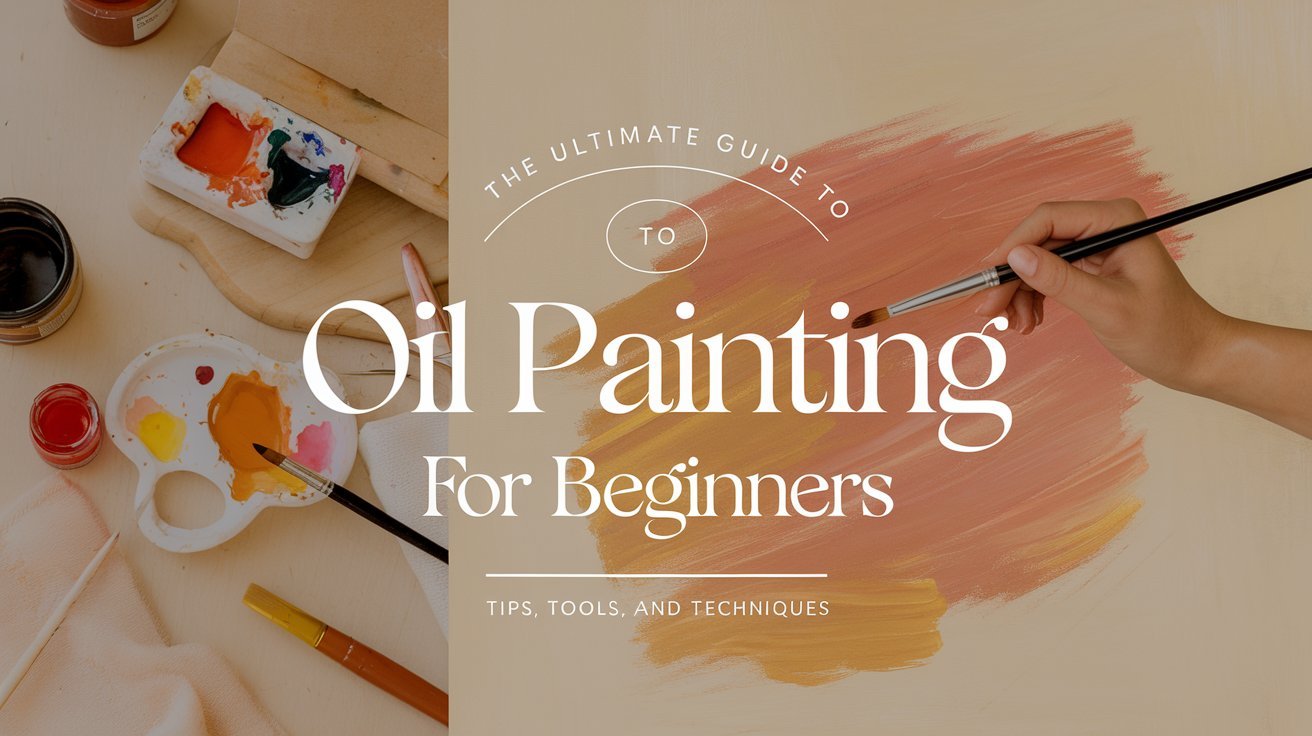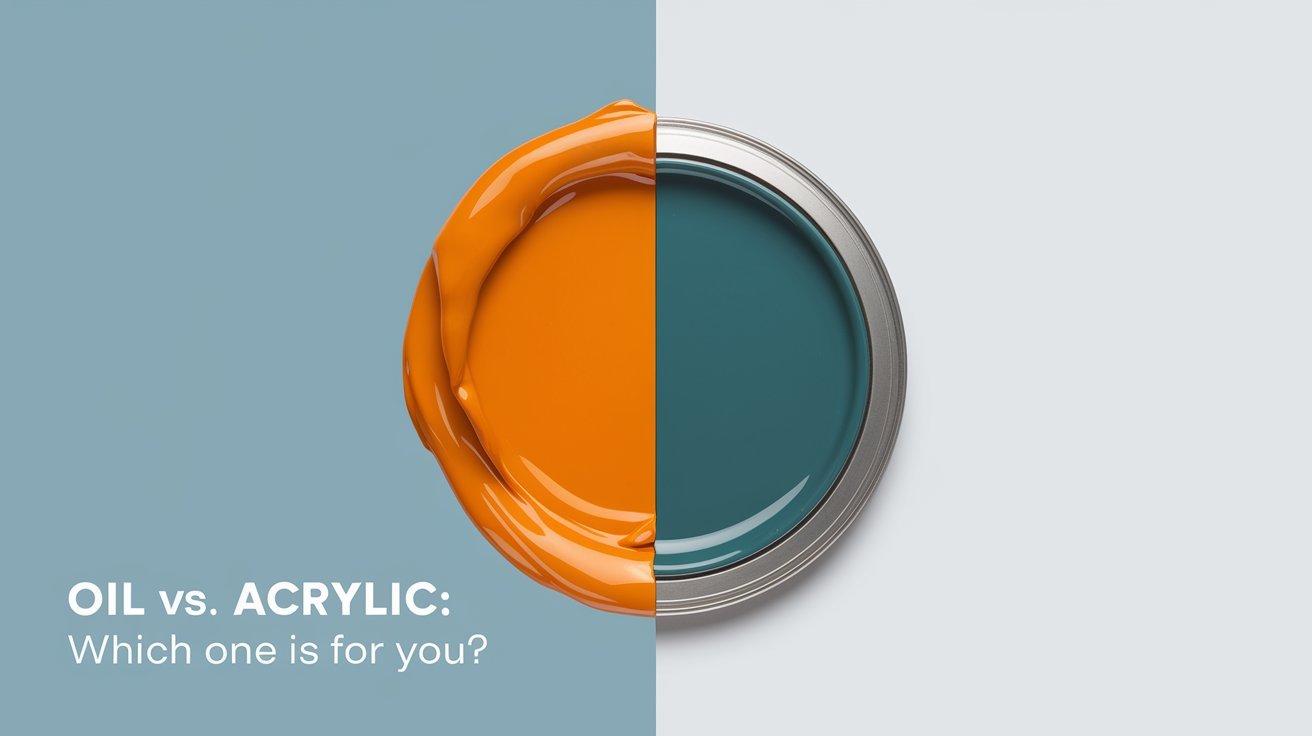Embarking on your journey into oil painting can feel like stepping into a world of endless possibilities, where vibrant colors and rich textures await your creative touch. Whether you’re drawn to the timeless beauty of oil paints or simply curious about how to start, you’ve come to the right place. But with so many options and techniques, it’s natural to feel overwhelmed. How do you choose the right materials? What are the best methods for blending and layering? And most importantly, how can you achieve that smooth, captivating finish you’ve always admired in famous works of art?
In this blog, we’ll explore the essential tools, techniques, and tips every beginner needs to navigate the world of oil painting. From understanding the unique qualities of oil paints to mastering the basics of color mixing and brushwork, this guide will provide you with a solid foundation. You’ll discover how to set up your workspace for maximum creativity, troubleshoot common challenges, and care for your materials to ensure they last for years. Plus, we’ll inspire you to embrace the learning process, encouraging you to experiment and explore the endless artistic possibilities oil painting offers. Let’s dive in and unlock the secrets to creating beautiful works of art with oil paints!
Understanding Oil Paints
Have you ever wondered what makes oil paint so special? It’s more than just a medium for creating art; it’s a versatile tool that offers endless opportunities for expression. If you’re just starting, it’s important to understand why oil paints have been beloved by artists for centuries.
Oil paints stand out for their rich, vibrant colors and ability to blend seamlessly on the canvas. But what exactly sets them apart from other painting mediums, like acrylics or watercolors? Let’s break it down.
The Unique Qualities of Oil Paints
- Rich Texture and Depth: Unlike acrylics, oil paints stay wet for a longer period, allowing for deeper blending and more subtle transitions between colors. This gives your artwork a lush, detailed texture that is hard to achieve with other mediums.
- Slow Drying Time: This is both a blessing and a challenge. The longer drying time means you can manipulate your painting over days or even weeks, blending colors and making adjustments as needed. But it also requires patience and a bit of planning.
- Color Intensity: Oil paints tend to have a higher pigment load, which means the colors appear more vivid and saturated, even when applied in thin layers.
Why Choose Oil Paints as a Beginner?
If you’re new to painting, oil paints might seem intimidating at first, but their forgiving nature makes them perfect for beginners. Here’s why:
- Layering Flexibility: The “fat over lean” rule is a simple concept that helps you build up layers without the risk of cracking. This allows you to work through your ideas slowly, ensuring each layer adds to the overall depth and richness of your painting.
- Blending Ease: Oil paints blend beautifully, enabling smooth transitions and gradients in your artwork. This makes them ideal for creating realistic portraits, landscapes, or abstract art.
Types of Oil Paints: Student vs. Artist Grade
When you’re starting, it’s essential to choose the right type of oil paint. Here’s a quick guide:
- Student-Grade Oil Paints: These are affordable and come with a slightly lower pigment content, which makes them a great choice for beginners. While they might not have the same intensity and vibrancy as artist-grade paints, they can still produce beautiful results with practice.
- Artist-Grade Oil Paints: These contain a higher concentration of pigment, which means more vibrant colors and smoother application. While they’re more expensive, they’re worth the investment if you’re serious about taking your painting skills to the next level.
Key Considerations When Choosing Oil Paints
Before you dive into the world of oil painting, consider these factors:
- Color Palette: Start with a basic palette that includes the primary colors (red, yellow, blue) and a few essential neutrals. This will give you the flexibility to mix a wide range of colors.
- Consistency: Some oil paints are thicker, offering a more textured finish, while others are more fluid. Choose based on your preferred painting style—whether you want a smooth, glossy finish or a more textured, impasto look.
Understanding the unique qualities of oil paints will set you up for success. But choosing the right materials is just the beginning. Stay tuned as we explore the tools and supplies you’ll need to bring your artistic vision to life!
Ready to Begin Your Oil Painting Journey?
Now that you have a solid understanding of the fundamentals of oil painting, it’s time to dive in and start creating your own masterpieces. Whether you’re setting up your workspace, mixing your first colors, or exploring new techniques, remember that every artist starts somewhere. The beauty of oil paints lies in their versatility and ability to adapt to your unique style, allowing you to grow as an artist with each brushstroke.
As a beginner, it’s important to give yourself the freedom to experiment, make mistakes, and learn from them. Oil painting isn’t just about achieving perfection—it’s about expressing yourself through rich, vibrant colors and textures. So, don’t be afraid to take your time, layer your paint, and blend away to create the depth and emotion you envision.
Remember, the most successful artists didn’t get there overnight. They practiced, learned, and embraced the journey. With the right tools, techniques, and patience, you’ll begin to see your skills improve, and before long, you’ll be amazed at what you can achieve with oil paints.
Are you ready to pick up that brush and start painting? The possibilities are endless, and your canvas is waiting for you. So, go ahead—unleash your creativity and let the world of oil painting inspire you. Happy painting!




